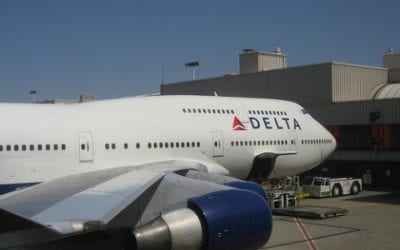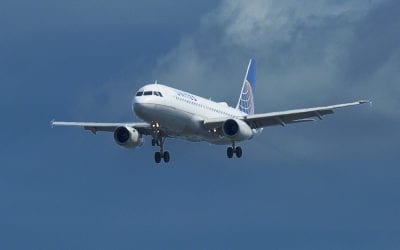Monday, July 28, was not a fun day to be an airline passenger departing from virtually anywhere in the northeastern U.S. So much so, that some of the long airline delays even made news headlines, as in the case of Delta flight 621 from JFK to Las Vegas.
There is some discrepancy regarding the length of the delay – customers report being onboard for 7 hours and the airline reports the delay as 5 hours – but nevertheless, either way, it’s a very long time.
Kennedy wasn’t the only airport impacted. Just down Interstate 95, in Philadelphia, things were just as bad, although it didn’t seem to garner as much mainstream news coverage as Delta 621. Philadelphia’s situation was covered from a very different angle — the airline employee’s — on the internet message board usaviation.com. As a former airline employee, I much prefer to discusss this angle.
Here, before the discussion digresses (most of these veer off topic eventually), we learn what the media didn’t tell us. Thunderstorms closed just about every flight route in the northeast in a domino effect sort of way. Transatlantic flight routes over New York – which Philadelphia traffic must traverse – were closed due to weather. Just as flights received reroutes from air traffic control, the flight paths to which these departures had been reassigned were subsequently closed. One thunderstorm line moving east to west converged with one moving north to south directly overhead Washington, DC. Essentially, all air traffic between Washington and New York ground to a halt.
The media didn’t cover the situation with that level of detail, did they? Doing so would have taken some wind out of their sails.
Katie Hanni, a consumer activist who formed the Coalition for Airline Passengers’ Bill of Rights, suggested she “Wishes [Delta had] come forward with something more proactive for passengers.” David Stempler, president of the Air Travelers Association, said “The Delta delay was unacceptable and kind of unconscionable.” In my opinion, both of these organizations are impotent at best, pander to Phil Gramm’s “nation of whiners,” and provide little more than media sound bites.
What exactly did Ms. Hanni and Mr. Stempler, and for that matter Representative Oberstar (D-Minn.) with his proposed boondoggle Air Service Improvement Act of 2008, expect Delta to do? Do they think the crew wanted to be cooped up on the plane any more than the passengers did, or that Delta wanted to pay additional wages to employees sitting on the ground?
I postulate that if Delta had turned tail and gone back to the gate without trying to depart, it would have been criticized for that, too. It was a no-win situation.
It’s reported that it took the Delta flight 90 minutes to return to the gate once the decision was made to cancel the flight. I can’t personally speak to the runway and taxiway configuration at Kennedy, but I can at Philadelphia International, which as I mentioned, was having trouble of its own. Similar conditions apply at Kennedy, LaGuardia, Boston’s Logan International, Midway and other airports hemmed in by either water or urban constraints.
Philadelphia International Airport presents a number of challenges for airlines:
1. Not enough airspace: Philadelphia is sandwiched between New York, Newark, Baltimore and Washington. When its flight routes are closed, traffic must either stop or encroach on another airport’s “highway in the sky.” The same goes for those other cities. Sort of like when a highway has a wreck – Garmin tells motorists to pick an alternate route, which quickly becomes clogged with traffic trying to avoid the first overcrowded road. This one is hard to fix. One cannot exactly produce more airspace without some sort of cosmic “big bang,” but then we’d likely be extinct and all of this would be moot.
2. Not enough land for runways and taxiways: The airfield is crammed between the Delaware River and Interstate 95. The primary runways are too close together to permit simultaneous takeoffs and landings. I’m no pilot, but the perpendicular runway is very short and seems only suited for commuter aircraft, although the last time I was there, I saw a Southwest jet landing on it. It looked like a sumo wrestler jumping onto a bathmat, and I’d be white-knuckling it if I were onboard. One of the runways is configured so that if a ship is in a certain place in the Delaware river, aircraft can’t use it. How dumb is that? It escapes me how a Passengers’ Bill of Rights can cure that situation.
Most taxiways are essentially one-way, one-lane streets. That means, if any of the airplanes ahead of you are waiting for clearance to take off, just about everybody in line has to wait too. And there isn’t any room to turn around and go back to the gate. Airplanes aren’t the size of Smart Cars. They have big wings that bump into one another if they try to pass on those one-lane roads.
3. Poor terminal design: When the first terminal buildings at Philadelphia were built, it seems our forefathers didn’t envision an airport of this scope. They are too close together to enable simultaneous taxi-in and taxi-out of two aircraft. That means if any airplane is moving within the “U” formed by the two buildings, no other can do so. Period. And with the rest of the gridlock (see #2 above), there’d be nowhere to put the aircraft anyway. That means those airplanes that want to come back to the gate can’t get there because the ones that want to leave can’t get out.
If Ms. Hanni, Mr. Stempler and Representative Oberstar really want to squawk about something, they’ll give up the ridiculous notion of a “Passengers’ Bill of Rights” and start focusing their attention on improving airfield and air traffic control systems. The airlines are nowhere near perfect, but they’re only able to play the cards they are dealt.



